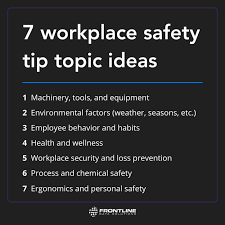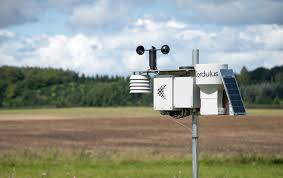The Importance of Building Resilient Communities
Building resilient communities is crucial in today’s world where natural disasters, economic challenges, and social crises are becoming more frequent and severe. A resilient community is one that can withstand and recover from adversity, adapt to changing circumstances, and thrive in the face of challenges.
Key Elements of Resilient Communities
Resilient communities are characterized by:
- Strong Social Networks: Communities with close-knit relationships and support systems are better equipped to handle crises together.
- Effective Communication: Clear communication channels ensure that information is disseminated quickly and accurately during emergencies.
- Infrastructure Resilience: Robust infrastructure that can withstand natural disasters and other disruptions is essential for community resilience.
- Emergency Preparedness: Well-prepared communities have emergency plans in place and residents who are trained to respond effectively in times of crisis.
- Sustainable Practices: Communities that prioritize sustainability are better able to adapt to environmental changes and resource constraints.
The Benefits of Resilient Communities
Resilient communities offer numerous benefits, including:
- Faster Recovery: In the aftermath of a disaster, resilient communities can bounce back more quickly due to their preparedness and coordination.
- Improved Quality of Life: Residents of resilient communities feel safer, more connected, and better supported in times of need.
- Economic Stability: Businesses in resilient communities are more likely to survive disruptions, leading to greater economic stability for the region.
- Social Cohesion: Building resilience fosters a sense of unity and cooperation among community members, strengthening social bonds.
Cultivating Resilience in Your Community
To build a resilient community, it is essential to prioritize collaboration, preparedness, and sustainability. By fostering strong relationships, investing in infrastructure improvements, and promoting disaster readiness initiatives, communities can become more resilient and better equipped to face future challenges.
In conclusion, building resilient communities is not only a proactive approach to mitigating risks but also a way to create stronger, more connected societies that can thrive in the face of adversity. By working together towards resilience, we can ensure a brighter future for all members of our community.
5 Essential Tips for Building Resilient and Inclusive Communities
- Promote open communication and collaboration among community members.
- Encourage diversity and inclusivity to ensure all voices are heard and valued.
- Develop emergency response plans and conduct regular drills to prepare for potential crises.
- Invest in education and skills training programs to empower community members to adapt to challenges.
- Foster strong social connections and support networks within the community.
Promote open communication and collaboration among community members.
Promoting open communication and collaboration among community members is a key tip for building resilient communities. By fostering transparent dialogue and working together towards common goals, community members can strengthen relationships, share valuable information, and coordinate efforts more effectively during times of need. Open communication and collaboration create a sense of unity and trust within the community, enabling residents to support each other, address challenges collectively, and build a stronger foundation for resilience in the face of adversity.
Encourage diversity and inclusivity to ensure all voices are heard and valued.
Encouraging diversity and inclusivity is a vital tip in building resilient communities as it ensures that all voices are heard and valued. By embracing a wide range of perspectives, experiences, and backgrounds, communities can foster creativity, innovation, and empathy. When every individual feels respected and included, they are more likely to contribute their unique insights and ideas, leading to stronger community bonds and better solutions to challenges. Embracing diversity not only enriches the community fabric but also promotes equity and unity among its members.
Develop emergency response plans and conduct regular drills to prepare for potential crises.
Developing emergency response plans and conducting regular drills are essential steps in building resilient communities. By proactively preparing for potential crises, communities can ensure that residents and organizations know how to respond effectively in times of need. Regular drills help familiarize individuals with emergency procedures, test the efficiency of response plans, and identify areas for improvement. Through these preparedness efforts, communities can strengthen their resilience, enhance coordination during emergencies, and minimize the impact of crises on their members.
Invest in education and skills training programs to empower community members to adapt to challenges.
Investing in education and skills training programs is a crucial step in building resilient communities. By empowering community members with knowledge and practical skills, they become better equipped to adapt to challenges and navigate uncertainties effectively. Education not only enhances individual capabilities but also fosters a culture of continuous learning and innovation within the community. Through these programs, community members can develop the resilience needed to face various obstacles, contribute meaningfully to their community, and collectively work towards a more sustainable and prosperous future.
Foster strong social connections and support networks within the community.
Fostering strong social connections and support networks within a community is a crucial tip for building resilience. When community members have close-knit relationships and reliable support systems, they are better equipped to navigate challenges together and provide assistance when needed. These connections not only create a sense of belonging and solidarity but also enhance communication, collaboration, and mutual aid during times of crisis. By prioritizing the development of strong social bonds, communities can build a foundation of resilience that enables them to withstand adversity and thrive in the face of uncertainty.




